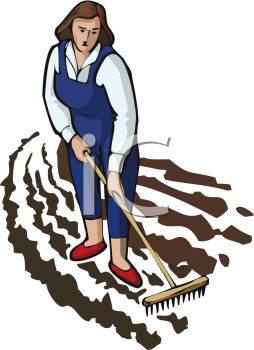(Food and Agriculture Organisation of the United Nations) If women in rural areas had the same access to land, technology, financial services, education and markets as men, agricultural production could be increased and the number of hungry people reduced by 100-150 million, FAO said in its 2010-11 edition of The State of Food and Agriculture.
Yields on plots managed by women are lower than those managed by men, the report said. But this is not because women are worse farmers than men. They simply do not have the same access to inputs. If they did, their yields would go up, they would produce more and overall agricultural production would increase, the report said.
"The report makes a powerful business case for promoting gender equality in agriculture," said FAO Director-General Jacques Diouf.
"Gender equality is not just a lofty ideal, it is also crucial for agricultural development and food security. We must promote gender equality and empower women in agriculture to win, sustainably, the fight against hunger and extreme poverty," he added.
Closing yield gaps reaps gains for all
Just giving women the same access as men to agricultural resources could increase production on women's farms in developing countries by 20 to 30 percent. This could raise total agricultural production in developing countries by 2.5 to 4 percent, which could in turn reduce the number of hungry people in the world by 12 to 17 percent, or 100 to 150 million people. An estimated 925 million people in the world were undernourished in 2010, of which 906 million live in developing countries.
"We must eliminate all forms of discrimination against women, ensure that access to resources is more equal and that agricultural policies and programmes are gender-aware, and make women's voices heard in decision-making at all levels. Women must be seen as equal partners in sustainable development," Diouf said.
Women's work
Women make up on average 43 percent of the agricultural labour force in developing countries, ranging from 20% in Latin America to almost 50% in East and Southeast Asia and sub-Saharan Africa. The share is higher in some countries and varies greatly within countries.
Where rural women are employed, they tend to be segregated into lower paid occupations and are more likely to be in less secure forms of employment, such as seasonal, part-time or low-wage jobs.
New jobs in high-value export-oriented agro-industries offer better opportunities for women than traditional agriculture, the report says.
Mind the gap
The report documents gender gaps in the access to a wide range of agricultural resources, including land, livestock, farm labour, education, extension services, credit, fertilizers and mechanical equipment.
Women in all regions generally have less access to land than men. For those developing countries for which data are available, between 3 and 20 percent of all landholders are women. The share of women in the agricultural labour force is much higher and ranges from 20 to 50 percent in developing country regions.
"Women farmers typically achieve lower yields than men, not because they are less skilled, but because they operate smaller farms and use fewer inputs like fertilizers, improved seeds and tools," said Terri Raney, editor of the SOFA report.
Leveling the ploughing field
"Evidence from many countries shows that policies can promote gender equality and empower women in agriculture and rural employment. The first priority is to eliminate discrimination under the law," Raney said. "In many countries women do not have the same rights as men to buy, sell or inherit land, to open a savings account or borrow money, to sign a contract or sell their produce. Where legal rights exist on paper, they often are not honored in practice."
Government officials must be held accountable for upholding the law and women must be aware of their rights and empowered to claim them.
Women face multiple constraints in agriculture arising from the complex nature of agricultural production and from competing demands on their time. To be effective, interventions must be "bundled" so they treat these constraints together, the report says.
Policies and institutions often have different impacts on men and women - even when no explicit discrimination is intended. "Men and women have different roles in society and face different opportunities and constraints," said Raney. "We can't make good agricultural policy unless we consider gender differences."
Building human capital
In addition to increasing overall agricultural production, closing the gender gap in agriculture would also put more income in the hands of women - a proven strategy for improving health, nutrition and education outcomes for children.
"One of the best investments we can make is in building the human capital of women and girls - basic education, market information and agricultural extension services are essential building blocks for agricultural productivity and economic growth," Raney said.
Click here to download chapters of the report, click here to view the full report.

No comments:
Post a Comment